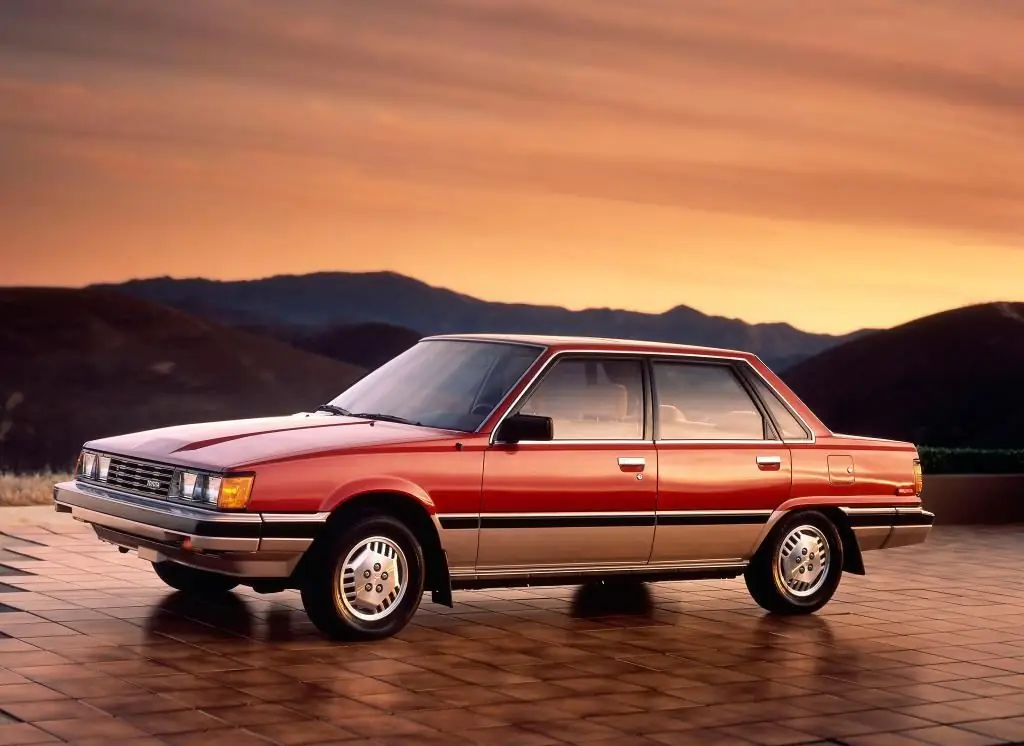2025 Author: Erin Ralphs | [email protected]. Last modified: 2025-01-22 21:14:14
PMZ-A-750 is the first heavy motorcycle in the Soviet Union, which was manufactured in the 30s at the Podolsk Mechanical Plant. It was produced both in a double version and with a sidecar. Actively exploited in the army, national economy, government services. Currently of great interest to museums and private collectors.

Development
In the early 30s, the Scientific Automotive and Tractor Institute (NATI) was asked to develop a heavy motorcycle with a power of 750 cm3, adapted to the road conditions of the USSR and suitable for working with a sidecar. To develop the project, designer Pyotr Vladimirovich Mozharov, the creator of the first IZH motorcycles, was invited to Moscow.
The working group considered the existing design solutions of the American firm Harley-Davidson and the German BMW, having drawn a number of ideas. Invaluable assistance in the creation of the PMZ-A-750 was provided by young designers Alexander Fedorov, Igor Okunev, Sergey Semashko, Boris Fitterman and others. Later Fedorovworked as the chief engineer of a plant in Irbit. Okunev became the chief designer of the Moscow Engine Plant, and then the AZLK automobile plant. Fitterman participated in the development of VMS vehicles.

From idea to realization
The concept of the engine, proposed by Soviet engineers, resembled the "Harley", while differing in many details. For example, the circulating lubrication system consisted of a dry sump system and a two-stage oil pump. The oil tank was proposed to be located in the common casting of the crankcase. The motorcycle used a battery for ignition, the engine is equipped with a gear train.
Firstborns
Work on the future PMZ-A-750 moved very quickly. By the spring of 1932, the drawings had already been prepared and sent to Izhevsk. In May 1933, 4 prototypes of motor vehicles were assembled, called NATI-A-750. On August 20 of the same year, they were delivered to Moscow.
Compared to production models in experimental motorcycles, the frame design and rear seats were simplified. On the left side of the front fork there was a sound signal, which was subsequently transferred to the steering wheel. The shift lever and clutch pedal are located on the left side, as in American motorcycles of the period. The driver's seat is also made in the American style: the saddle is deep, set high for the rear passenger. The footpegs are far forward, the front and rear wheels are equipped with a retractable stand.

Production
Developersthey were looking forward to the launch of mass production, but the workshops in Izhevsk were not yet sufficiently equipped to cope with such a complex product. In 1935, the People's Commissariat transferred the technical documentation to the operating Podolsky Mechanical Plant, which was the Russian branch of the Singer company. The sewing machine factory had 11,000 employees and a good environment for responsible production.
The first production motorcycle PMZ-750 rolled off the assembly line in 1935, just in time for a significant date - May 1. When Ordzhonikidze, People's Commissar for Heavy Industry, visited the production site on July 25, the factory workers demonstrated nine units of motor vehicles to him.
Specifications
Motorcycle PMZ-A-750 has the following characteristics:
- The motor cylinder is four-stroke, cooling is air. Displacement - 747 cm3.
- Power - 15 liters. With. (11 kW) at 3600 rpm
- Number of gears - 3 (ratio 3, 045-1, 58-1, 00).
- Gearbox - chain 5/8x3/8".
- Tire size - 4, 50x19".
- Wheelbase - 1395 mm.
- Model height - 1050 mm.
- Length - 2085 mm.
- Ground clearance - 112 mm.
- Total weight - 225 kg.
- Capacity - 115 kg.
- Fuel tank volume - 21 l.
- Speed (maximum) - 105 km/h (without sidecar).
- Fuel consumption (average) - 6 l.

Reviews
Motorcyclists ambiguously evaluated the PMZ-750. Some praised the frame structure andeasy access to components, others considered the device not very well thought out. In many ways, the maintenance of the motorcycle was different from other models, which introduced certain inconveniences.
The mechanical gearbox was located at the top of the motor, while switching was carried out by a special lever located on the left side of the motorcycle. The clutch was of two types: either double-lever with a pedal on the left side, or a lever on the steering wheel on the left side. During the hot period, frequent oil changes in the lubrication system were required - every 1000 km. Setting up the bike was difficult and time consuming.
Schebler brand carburetor often caused problems when starting the engine. Precise coordination of the optimal positions of the air damper, ignition (on the left side of the steering wheel) and throttle opening (on the right side of the steering wheel) was required. Motorcyclists jokingly deciphered the abbreviation PMZ as "try to start me." Meanwhile, the design was innovative, many interesting ideas were used in subsequent models. More than 4,600 units have been assembled in total.
PMZ-750 was used not only in government agencies and the army, they were also sold to private individuals. A motorcycle with a sidecar was especially appreciated. The price by the beginning of 1938 was 7760 rubles, which is very expensive compared to other mass models. For example, Izh-7 was sold for 3300 rubles, "Red October" L-300 was estimated at 3360 rubles.
Recommended:
Russian "Hammer": characteristics, photos and history of creation

Russian "Hammer": specifications, base, history of creation, modifications, photos. Russian "Hammer" based on GAZ-66: description, types, operation, stages of creation, features. Russian military "Hammer": parameters, pros and cons
Cummins engine: history of creation, characteristics, repair

The American company Cummins produces power units for road construction, quarry equipment, railway, road, water transport, oil and gas industry. Cummins engine is a model of reliability, environmental friendliness and economy
Soviet electric car VAZ: review, features, characteristics, history of creation and reviews

In fact, not only the idea, but the car itself with an electric motor began to travel on the roads before gasoline-powered cars (1841). At the end of the century before last, various records were set on electric vehicles in America, including the mileage from Chicago to Milwaukee (170 km), without recharging, maintaining a speed of 55 km / h
Toyota Camry lineup: the history of the creation of the car, technical characteristics, years of production, equipment, description with photo

Toyota Camry is one of the best cars made in Japan. This front-wheel drive car is equipped with five seats and belongs to the E-class sedan. The Toyota Camry lineup dates back to 1982. In the US in 2003, this car took the first position in sales leadership. Thanks to its development, already in 2018, Toyota released the ninth generation of cars in this series. Model "Camry" is classified by year of manufacture
Soviet motorcycle "Tula": history, description, characteristics

Tula is associated with gingerbread and samovars for many. But adult motorcyclists still remember the Tulitsa scooters, which were distributed throughout the country, and the Tula motorcycle, which is ridiculous in today's perception. This off-road motorcycle is a domestic development

